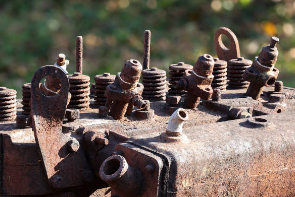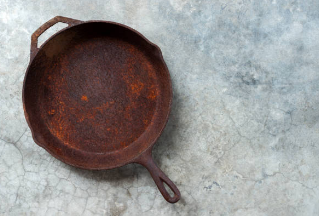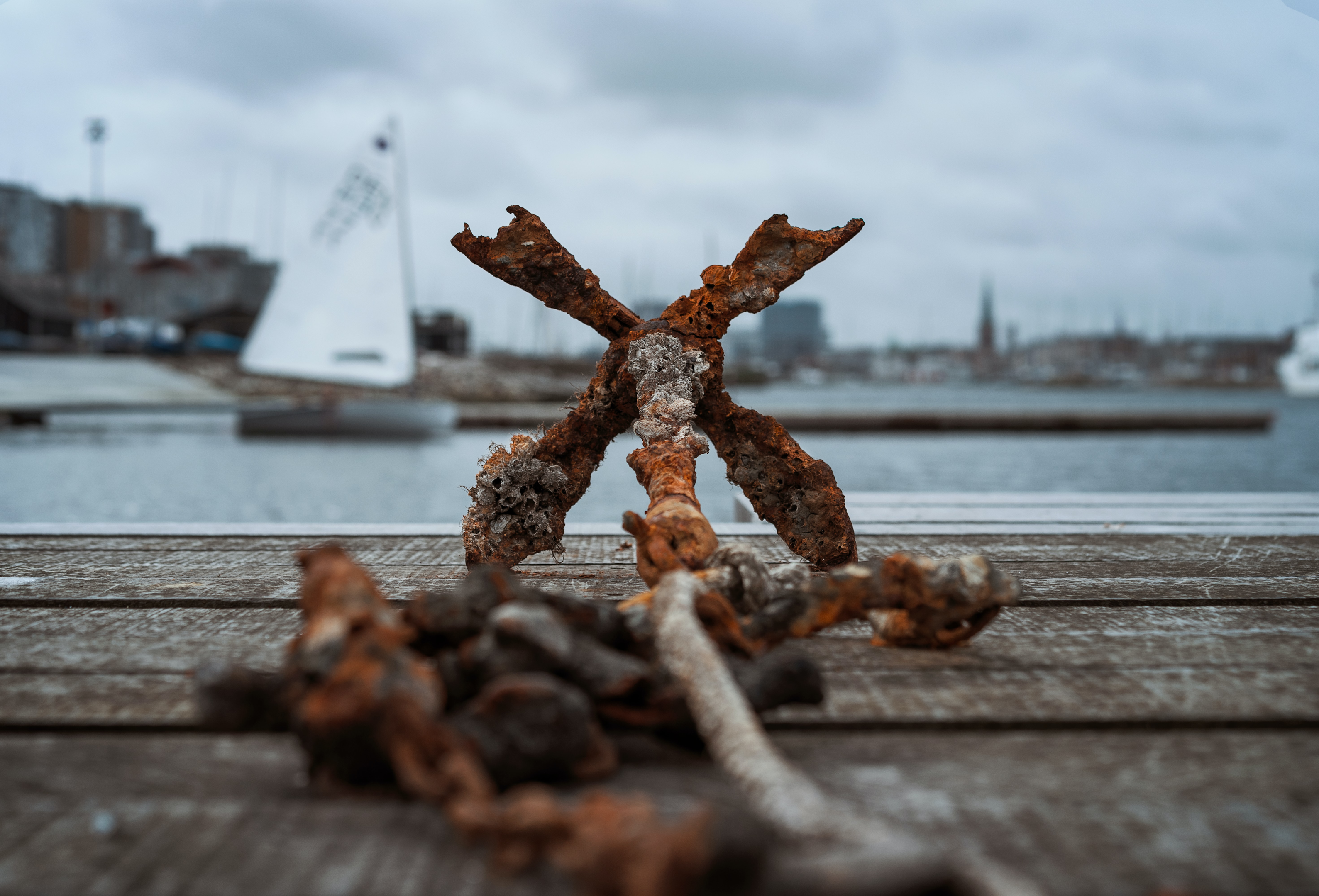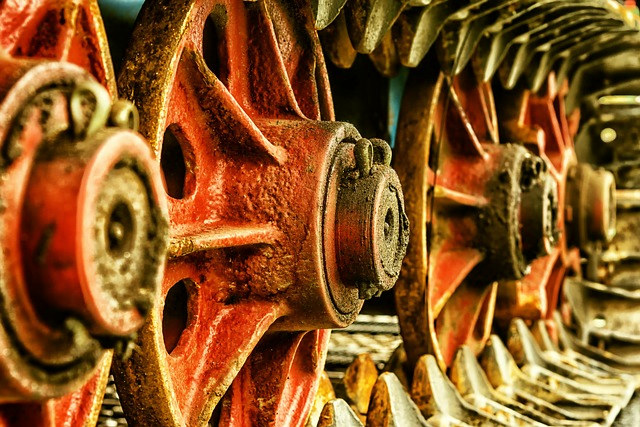Can cast steel parts and cast iron rust? Yes. This is a question that is frequently asked by those who use cast steel parts for their industrial and commercial applications. While cast steel is highly resistant to corrosion, it is not completely immune to rust. This article will discuss what causes cast steel parts to rust and how to prevent it.
Steel castings are a common manufacturing material used in a variety of industries, including automotive, agricultural, and construction. Depending on the type of steel casting, some are more susceptible to rust than others.
Types of Steel Castings Susceptible to Rust

Rust is a common issue with many metal parts, especially cast steel parts. If not properly taken care of, these parts can rust and cause a variety of issues ranging from performance issues to complete failure.
Carbon Steel
Carbon steel is an incredibly popular material used in a variety of products, from car parts to kitchen knives.
Carbon steel is a type of steel that contains carbon and iron and is susceptible to rust due to its chemical composition. Rust is the result of the oxidation of iron, and when this process occurs on the surface of the steel, it leads to the formation of iron oxide, which is commonly known as rust.
The carbon content of the steel decreases its resistance to corrosion, as carbon acts as a catalyst in the formation of iron oxide. The more carbon content present in the steel, the more likely it is to rust.
Cast Iron

Cast iron is a popular material used in many applications, ranging from cast iron skillets to structural components. While cast iron is strong and durable, it is also susceptible to rust. Rust can weaken ornate ironwork structures, making them more susceptible to damage and corrosion.
Rust can also cause cast iron to deteriorate quickly. This makes it difficult to maintain, as rust can continue to spread and corrode the metal. Furthermore, rust can make it difficult to paint or seal cast iron, as it can prevent adhesion.
Cast iron contains a high amount of iron, which is more likely to oxidize than other metals. Additionally, the presence of carbon and other elements can create a porous surface, allowing oxygen and moisture to penetrate the metal more easily.
Rust is possible in all types of iron castings, including ductile iron, gray iron, malleable iron, and white iron.
Stainless Steel
Stainless steel is a highly durable metal, but unfortunately, it is not completely corrosion-resistant. Rust is the result of a reaction between iron in stainless steel and oxygen in the air, which can lead to discoloration and corrosion. The rust formed on stainless steel is often referred to as “surface rust” because it is typically only found on the surface of the metal.
Higher grades of stainless steel typically have a higher chromium content, which helps to have better corrosion resistance. Lower grades of stainless steel have less chromium, and therefore are more susceptible to rust.
Causes of Corrosion

Rust is a common problem that can affect alloy steels such as iron, steel, and other alloys. The corrosion of metals can cause structural damage, from small pitting to large flaking, and can significantly reduce the mechanical properties of the metal.
Moisture
Ferrous metals, including raw steel, are most susceptible to rust when exposed to water or humidity in the air. This is because water molecules can easily penetrate metal surfaces, allowing oxygen and other elements to interact with the metal and cause oxidation. This oxidation process can cause metal surfaces to corrode, which leads to rust.
Moisture can come from a variety of sources, including rain, humidity, condensation, and even sweat. When these moisture sources come into contact with metal, it absorbs some of the moisture, allowing the chemical reaction to occur.
This usually happens in cast iron cookware when they are not dried with a paper towel after washing.
Airborne Chemicals
Airborne chemicals are a major contributor to the rust formation of castability cast iron. When the air contains pollutants, like sulfur dioxide and nitrogen dioxide, it can create an acidic environment. This acidic environment causes the iron to oxidize faster and more easily. The iron then combines with oxygen to form rust.
In urban and industrial areas, the air can contain a variety of pollutants, including sulfur dioxide, nitrogen dioxide, and ozone. These chemicals can be released from industrial processes, such as burning fuel or smelting metals. In rural areas, rust can be caused by dust and dirt that contains iron particles.
Improper Casting Process
Improper casting can cause rust in several ways. First, if the casting process is done too quickly, the molten metal may not cool evenly, leaving areas of the metal exposed to oxygen and water. This can form small pockets of rust that weaken the metal and reduce its structural integrity.
Second, if the casting is not properly cleaned after the casting process, any dirt or debris can trap moisture and accelerate the rusting process. This is especially true for metals that are exposed to the elements, such as outdoor equipment or tools.
Finally, if the metal is not properly sealed after the production process, moisture can penetrate the casting and cause rust. This is especially true for metals that are exposed to the elements, such as outdoor equipment or tools.
Temperature
Temperature is another important factor when it comes to rust. When the temperature rises, the water evaporates faster, which increases the amount of oxygen in the air.
Corrosion occurs most often in areas with high humidity and high temperatures. High humidity increases the amount of water in the air, and the higher the temperature, the faster the water evaporates. This creates an environment that is conducive to corrosion. It is also more likely to form on metal surfaces that are exposed to water and high temperature.
How to Prevent Corrosion

Corrosion is a serious issue for industries and homeowners alike, leading to costly repairs and replacements. But the good news is that corrosion can be prevented with a few additional fabrications to make it an ideal metal.
Protective Coating
The first type of coating is a galvanic coating. This surface treatment is applied to metal surfaces to provide a protective barrier against corrosion. It works by creating a barrier between the metal and the corrosive environment. The coating can also be applied in layers to create a thicker barrier that is more resistant to corrosion.
The second type of coating is galvanic paint. This is made of a combination of zinc and aluminum particles that are applied to the final product. The zinc and aluminum particles create an electrical charge that acts as a shield against corrosion. The particles also create a barrier that prevents water and oxygen from reaching the metal surface, which further helps to prevent rusting.
Heat Treatments
Heat treatment is a process used to modify the physical, chemical, and mechanical properties of metals and alloys. It is often used to prevent corrosion, or the breakdown of a material due to the reaction of its environment. Heat treatment can be used to reduce the amount of corrosion a material is exposed to, as well as to achieve the desired properties.
Heat treatment involves heating and cooling the casting in order to change its mechanical properties. During the heating process, the casting is heated to a specific temperature and held at that temperature for a certain amount of time.
The heat during the austenitizing process increases the hardness of the steel castings.
Proper Maintenance
Corrosion is a common issue that affects a variety of materials, especially cast iron cookware.
The first step in preventing corrosion in a cast iron skillet is to keep it clean and free of debris. This includes removing dirt, debris, and other contaminants from the surface. Regularly wiping down the surface with a soft cloth or a paper towel and a mild detergent can help prevent a build-up of dirt and debris.
Additionally, it is important to keep the surface of the cast iron skillet completely dry before it is seasoned with oil to reduce the chance of corrosion.
Corrosion Inhibitors
Corrosion inhibitors can be used in a variety of applications, from automotive to industrial. In automotive applications, corrosion inhibitors are used in antifreeze and coolants to protect the engine from corrosion.
They are also used in paint and coatings to protect surfaces from corrosion. In industrial applications, corrosion inhibitors are used to protect equipment from the elements and to extend the life of equipment.
The most common types of corrosion inhibitors are organic and inorganic compounds. Organic compounds are carbon-based and commonly used in automotive applications. They work by forming a barrier between the steel and its environment. A solution-treated steel casting prevents oxygen and water from making contact with them.
Inorganic compounds are usually made of metals such as zinc, aluminum, or magnesium, which react with oxygen and water to form a coating.
Impacts of Rust on Metal Parts
Its impact on metal parts ranges from aesthetic damage to structural failure. It can cause parts to become brittle material, leading to premature failure of components. In addition, it can also cause parts to become stuck together, making them difficult to repair or replace.
Poor Casting Performance
It causes the steel to become pitted and corroded, which can affect its strength and integrity. This can be especially problematic for casting processes because the steel must be shaped and formed in order to create the desired part.
When rust is present, it can cause the steel to become weak and brittle. This can result in cracks and other defects in the casting, as well as a decrease in its overall strength. In some cases, the part may be completely unusable due to rust damage.
Aesthetic Concerns

When rust builds up on metal parts, it can create an unsightly appearance that can be difficult to fix. It can also make it difficult to paint or finish the parts, as the paint may not adhere properly to the surface if it is rusted.
Loss of Tensile Strength and Durability
The weakening of the steel can lead to a decrease in its compressive strength and durability. As the metal’s surface weakens, it can be more susceptible to cracking, bending, or breaking under pressure.
Corrosion and Leaks
The corrosion can weaken the structural integrity of a metal part, making it more prone to breakage or failure. It can also cause metal parts to become brittle and brittle parts are more likely to crack or break. This can lead to leaks, which can cause further damage to the metal part and the surrounding area.
The oxidation of the metal part can cause it to become less efficient and this can lead to decreased performance. Rust can also cause metal parts to become more susceptible to fatigue and stress. This can cause metal parts to become less durable and reliable over time.


